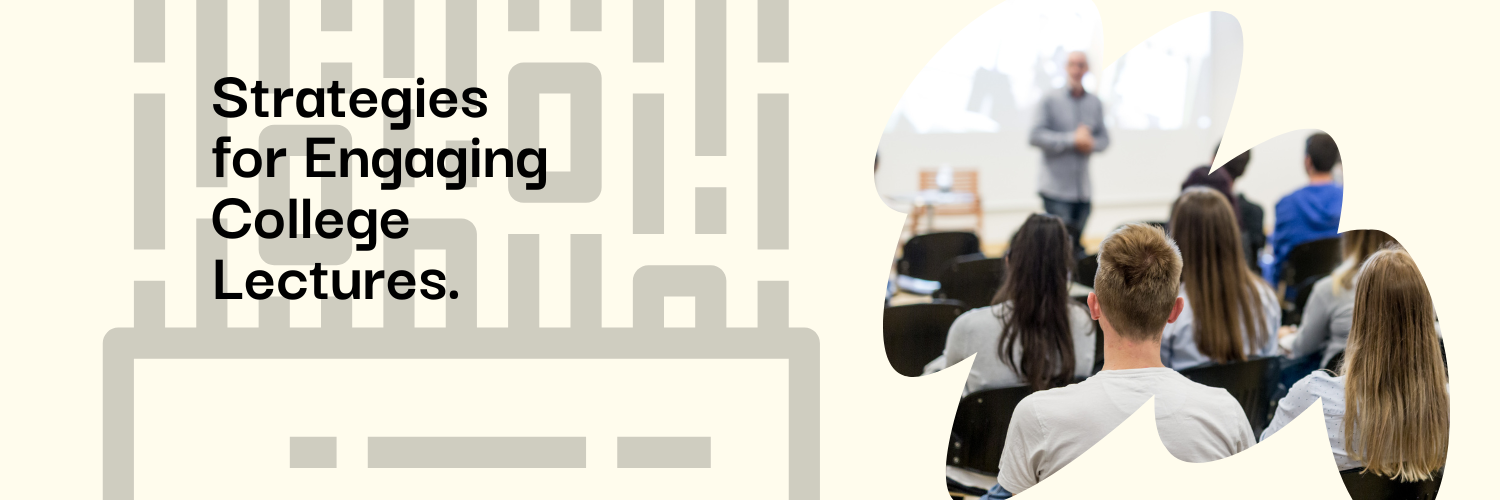Let’s make college lectures easier to understand and more useful for you. Think of it as a set of tools that help you get more out of what the teacher says, so you can remember it better and use it when you need to. We’ll talk about simple ways to take good notes, ask questions to clear up any confusion and review what you’ve learned so it really sticks.
Ready to find out how you can do all this? Let’s get started.
Engage before the lecture
Getting ready before a lecture can make a big difference in how well you understand and remember the information. Here’s a simple breakdown of what you can do:
- Start with the basics: Look at your lecture schedule and see what topic is coming up next.
- Do your homework: If your teacher has given you any readings or problems to do before the lecture, make sure you do them. This helps you get a first look at what you’ll be learning.
- Look up more information: If there’s something you don’t understand from your homework, or if you’re just curious, look for more details online or in your textbook.
- Write down your questions: As you’re preparing, you might think of things you want to ask about in class. Write these down so you don’t forget to ask later.
- Connect new ideas with what you know: Try to think about how the new topic is related to things you’ve already learned. This can help you understand the new information better.
By doing these things, you’re getting your brain ready to add new information to what you already know. It’s like warming up before playing sports; it helps you perform better.
Note Making
Taking notes is a big part of learning actively in college. It’s not just about writing down everything the teacher says, but about picking out the important parts that will help you understand and remember the topic. Here’s how you can do it well:
- Find the main points: Listen for the big ideas in the lecture. These are usually the things the teacher repeats or spends a lot of time on.
- Write in your own words: Instead of copying exactly what’s said, try to write the ideas in a way that makes sense to you.
- Highlight or underline: Use different colors or underlining to mark the really important stuff, so it stands out when you’re reviewing.
- Draw pictures: If the teacher is explaining something complicated, like a process or a structure, a quick drawing can sometimes make it clearer than words.
- Make mind maps: For topics with lots of parts, a mind map can help you see how everything fits together. Start with the main idea in the center, then draw branches out to the related points.
By following these tips, you can ensure that your notes are useful and help you study better.
Ask questions
Asking questions is a really important part of learning, especially in college. Here’s why it’s so helpful and how you can do it:
- It helps you understand better: If something in the lecture isn’t clear to you, asking a question can help you get a better explanation.
- It keeps you involved: When you ask questions, you’re taking an active role in the lecture. It’s like being a part of a conversation instead of just listening to someone talk.
- It shows you’re interested: Teachers usually like it when students ask questions because it shows that they’re paying attention and want to learn.
Remember, there’s no such thing as a silly question. If you’re wondering about something, it’s always worth asking. It’s a big part of learning and getting the most out of your classes.
Participate in discussions
Joining discussions with your classmates can really help you learn better. Here’s a closer look at how talking about what you’re learning can make a difference:
- You can find out what you don’t know: Sometimes you think you understand something until you try to explain it. If you encounter difficulties, you are aware of the areas you need to revisit.
- You get new ideas: Other people might have different ways of looking at the topic that you haven’t thought of. This can help you see the whole picture.
- It’s good practice for tests: In discussions, you often have to think quickly and answer questions, which is just like what you do in exams.
Remember, the more you put into it, the more you’ll get out of it. So don’t be shy—start talking and see how much it can help your learning.
Review and Reflect
Reviewing and reflecting on what you’ve learned after a lecture is like giving your brain a second chance to really get the material. Here’s how you can do it:
- Go over your notes: Right after the lecture, or at least the same day, look at your notes again. This helps move the information from your short-term memory to your long-term memory.
- Summarize the big ideas: Try to write down the main points of the lecture in a few sentences. This makes sure you really understand the key concepts.
- Connect the dots: Think about how what you learned fits with other things you know about the subject. It’s like putting pieces together in a puzzle.
- Ask yourself questions: Come up with some questions about the lecture, and see if you can answer them. This is a good test of how well you understand the material.
By doing these things, you’re not just memorizing facts; you’re really thinking about what they mean and how they fit into the bigger picture.
Conclusion
When you use active learning strategies in your lectures, you’re really taking charge of your education. It’s like turning on a light in a room that was dim before—you suddenly see everything more clearly. You’re not just sitting back and hoping the information will stick; you’re reaching out and grabbing it. This means you’re more likely to remember what you’ve learned, understand it deeply, and be able to use it when you need it. It’s about making the most of your time in college by being an active participant in your own learning journey. So, every time you walk into a lecture, you’re not just there to hear someone talk—you’re there to engage, understand, and grow. Explore the Best Colleges for UG, PG, and Law Courses and embark on a journey of discovery and self-improvement through active learning.






